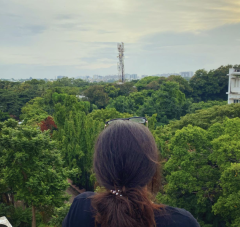It’s no doubt that technology has had a significant and fundamental influence on retail brands’ relationships with their customers. Consumers have never been more powerful than they are now, thanks to social media, which allows them to connect with businesses they love and, perhaps more crucially, help form perceptions of those they don’t. Forward-thinking marketers have chosen to interact fully with their consumers, even using their loyalty to increase revenue. Authenticity is promoted via user-generated content. When compared to brand-created material, consumers are substantially more likely to believe user-generated content is real. Since only over half of companies develop real content, this gives brands a significant reputation boost. These efforts tend to build trust. Modern consumers want to know what they’re getting before they buy it, whether it’s a product, a service, or an experience, and what better way to persuade them than to allow them to communicate with the brand and other customers who have purchased the same goods. Most crucially, UGC has a dual nature from the perspective of brands: it suggests a more participatory type of creation while also being incredibly cost-effective as a method of creating free content.
One of the most memorable and successful crowdsourced pieces of user-generated content is Lay’s “Do Us a Flavour” campaign. Shorty “Industry Award for Best Overall Twitter Presence” and Shorty “Industry Award for Best Consumer Brand” are among the honours it has received. Why? It might be the $1 million cash reward or the fact that the winner is chosen by the public. In any case, the customer feels in command of their million-dollar prize, which is rather appealing.

Furthermore, by advertising their contribution and soliciting votes, the contest pushes participants to actively expand their own social media following. As a consequence, organic user-generated content is produced, which reaches a wide range of customers. Lays also teamed up with Facebook to transform the “Like” button into an “I’d Eat That” button. The best contributions were shown on a revolving billboard on the Facebook page’s cover photo. After the deadline, a group of judges, including celebrity chef Michael Symon and actress Eva Longoria, helped narrow down the entries to the top three. Customers were then able to purchase and experience the three varieties in shops. PepsiCo’s first crowdsourcing initiative in the United States was a big success, generating value for both the company and its customers.
Cheesy Garlic Bread, Chicken & Waffles, and Sriracha were chosen as the three finalist tastes. The company’s objective was to develop social media awareness among its 18-34-year-old millennial clients and get 1.2 million taste suggestions. They expected that this would result in a +3% increase in sales. 3.8 million entries were received throughout the ten-month campaign, which resulted in approximately 22.5 million Facebook page visits and a sales increase of +12% year over year. Lays decided to expand the campaign overseas since it was so successful.
The main advantage of Lays’ crowdsourcing effort is that it allowed the company to get low-cost insights about consumer preferences and habits. The company also raised favourable brand recognition, particularly among millennials, whom it had previously struggled to recruit. In addition, the Company was able to significantly reduce the product development life cycle by introducing a product in 10 months rather than the customary 15-20 months. Due to product development being outsourced to the public, there are also financial savings associated with a reduced requirement for a big Research & Development workforce.
By placing the power in the hands of the audience, Lays is proving that they trust their customers’ ideas and believe they will help their business. Social media was a vital component in building ties with the company and target audience due to its high demand and rising usage.


This UGC, in my opinion, was the most innovative, successful, and well-thought-out in terms of money, time, and total investment. This UGC is directly related to Freedman’s point about how cost-effective campaigns maybe, as Lays would have spent far more money if the campaign had not taken place.
